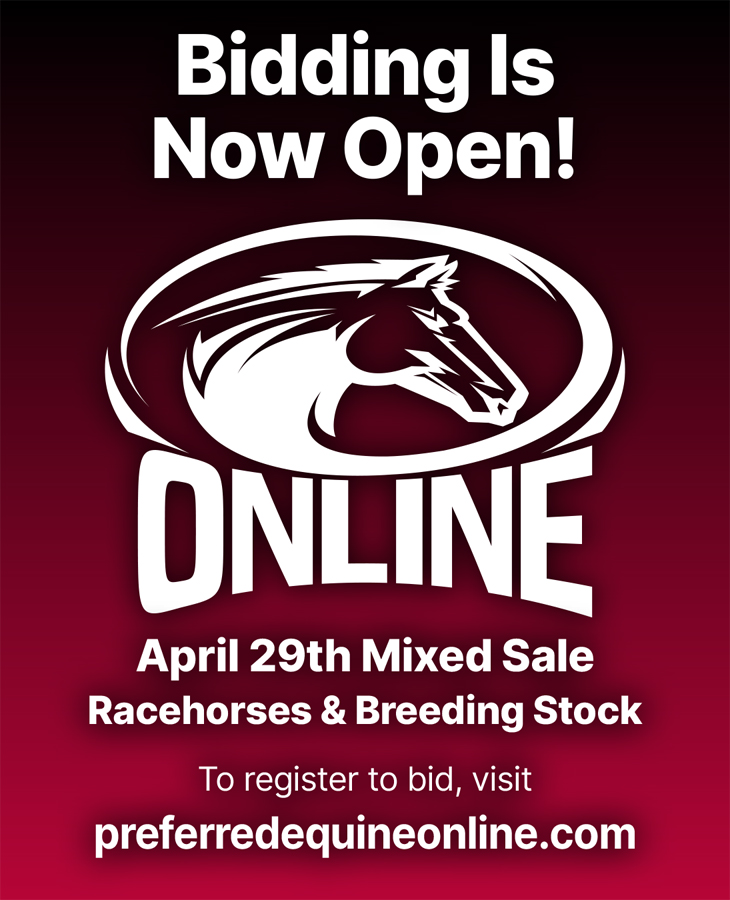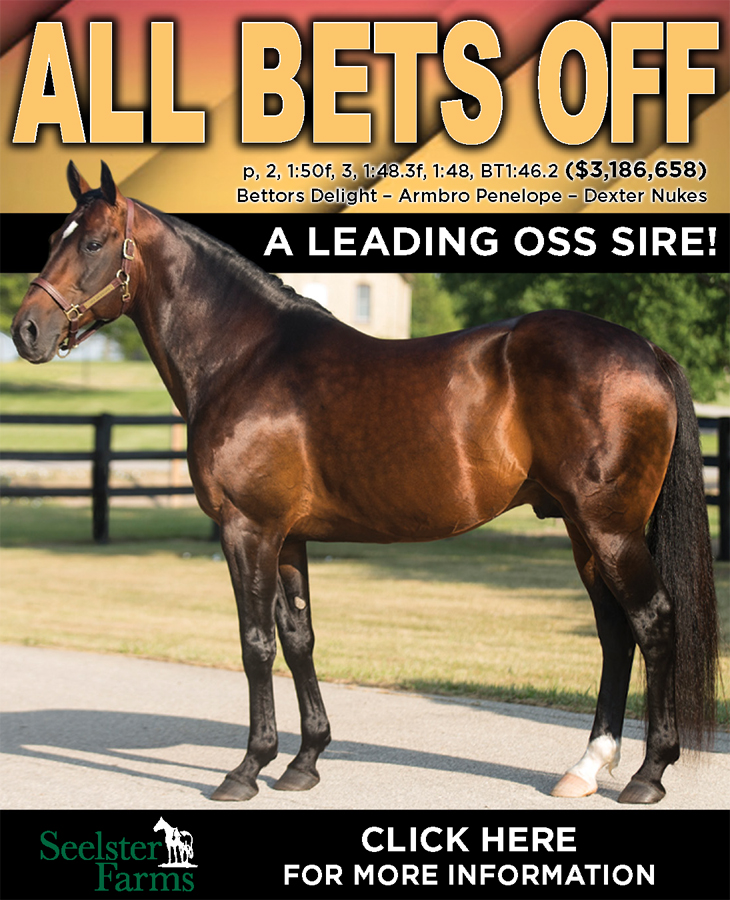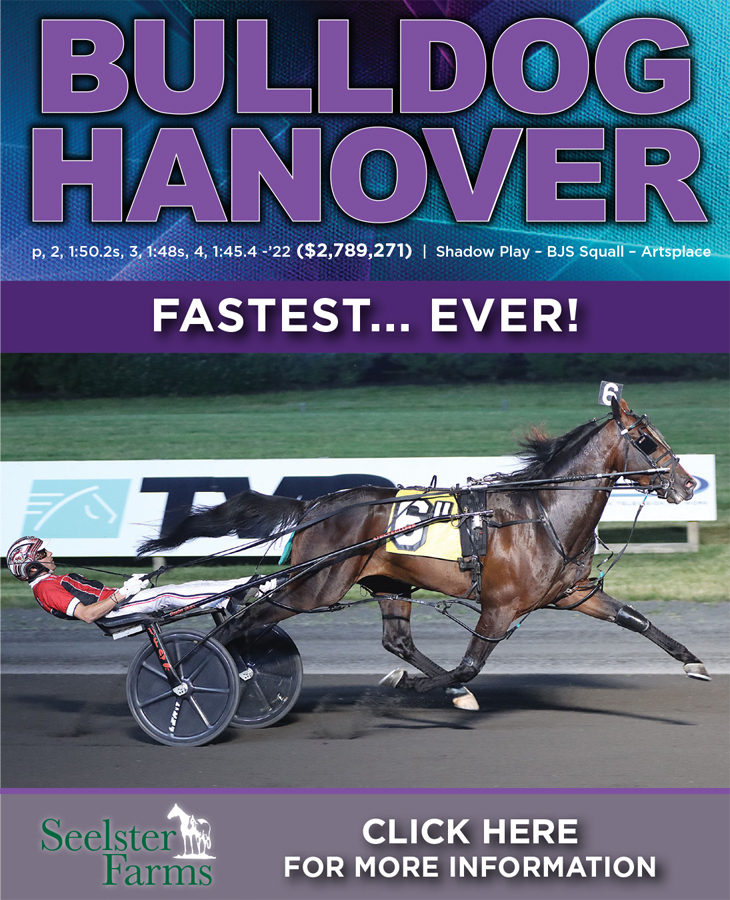

Owner Gino Toscani doesn’t need to spread the risk to be successful
by Murray Brown
At the Canadian Classic Yearling Sale in 1990, Gino Toscani purchased the grey Laag yearling filly Ghostly for the reasonable price of $28,000. She went on to earn $414,600. One would think that had to constitute a great bargain. Yes, it did, but… that was the door-opener for millions more to be spent for many others with which he wasn’t nearly as fortunate.
Nevertheless, as Toscani said, “Buying yearlings which you hope to develop into top racehorses may not be the wisest way to spend your money, but it isn’t the riskiest way to invest in the horse business. Without a doubt, from my experience, trying to breed that champion is far more risky. I’ve tried it all, breeding, buying yearlings and sometimes buying made racehorses.
“In terms of being successful with the least amount of risk, I would advise anybody looking to get into the racehorse business to go with the made racehorses. With them you know what you are getting. There is some immediate gratification. The claimer that you bought last week will be racing for you and earning money this week. But you will be doing it absent the dreaming that buying a yearling brings.
“When you buy a racehorse, with very few exceptions you know what you have. A $30,000 claimer will probably stay at that value or less for as long as you own it. Have there been many claimers that have risen through the ranks to become top racehorses? Sure, there have been some, but not many. What you’ve claimed is pretty much what you own. When buying yearlings, you can dream of buying that future champion regardless of how much you’ve spent. You can also play a part in its destiny. In my case, getting Ghostly for $28,000 was a great buy. But there have been many others. Likely the greatest bargain ever was the great world champion Fresh Yankee who was purchased at the 1964 Harrisburg sale for $900. Yes, you read that right. Her selling price was $900. She only went on to earn $1,294,252; in 1960’s dollars.”
Toscani went on to explain that yearling buying certainly has its risks.
“There are far more that don’t work out than those that do. But when you hit upon that good one, the pleasure can be indescribable. I realize the risks involved, but I suppose that by nature I am a risk taker. I am certainly more risk adverse to being interested in getting involved in the breeding business. Mind you, I’ve tried it. It’s not my cup of tea. At least with yearlings, you will usually know in less than a year whether or not you’ve made a good buy. If you haven’t, you can sell that horse and get replacements for it.
“If you are breeding, that several months stretches into almost three years. That’s also dependent on your mare getting in foal and liking the foal that you get. It doesn’t matter if you like it or not, you are stuck with it. As for me, I really like the yearling game. I can buy the pedigrees and individuals that I like at prices that I’m okay with.”
You certainly are not exaggerating when you say that you like the yearling game. How many yearlings did you buy at last fall’s sales?
“Probably the best way for me to answer is to tell you that we trained close to 40 2-year-olds this past winter. Just about all of them are still in training. Twenty or so have already qualified and are racing. I suppose most owners feel positive about their stables at this time of year. We are no exception. We really like what we have and are enjoying seeing our babies race.”
You buy a lot of yearlings. What determines which horses you are most interested in acquiring?
“I suppose, like most buyers, the biggest factors are individuals and pedigrees. The last couple of years we have concentrated mostly on trotters, although we still buy some pacers. I have my likes as do most people. I like size. I most definitely do not want a small yearling. Some people do, I suppose.
“As for me I like a big robust horse. I look upon them as being athletes. A big person will generally do better in sports than a small one. I believe the same holds true for horses. From my experience, all things being equal, a big horse will generally outperform a small one. There are exceptions, of course, as there are to most things, but I prefer to have what I see as the percentages being in my favor. I also very much like first foals and foals from young mares.”
How about pedigrees? Are there any sires that you hold in high regard over others?
“Like just about everyone else, I love the Walners. You don’t have to be a horse whisperer to recognize that, at the moment at least, he seems to be the most dominant trotting sire around. I especially like the Tactical Landing fillies. There are others of course, Chapter Seven, Muscle Hill, Father Patrick and now International Moni appears to be making an impact. Among the new sires, the Six Packs and the Greenshoes are showing up. It won’t be that long until they start sorting themselves out. By the mid part of the racing season, we should know who the best sires are. I’d be surprised though if the Walners, Muscle Hills and Chapter Sevens are not still leading the pack.”
How about price range? At what levels are you most comfortable?
“In my 30-plus years in the game I’ve shopped at all levels. One thing I’ve learned is not to shop at the very highest levels, even though I’ve sometimes been guilty of doing that. In terms of my personal preferences, I like the range between $25,000 and $75,000. I realize that’s a wide range. There are certainly bargains to be found at less than $25,000. But chances are if they are bringing less than that, there is a reason for the low price.
“I think that as prices approach six figures and beyond, it just doesn’t make terrific economic sense. I can see it perhaps if you are in the breeding business and are looking to buy top bred fillies to enhance your broodmare band. Those prices put people like myself and Serge Godin of Determination at a disadvantage. We are lone wolves bidding singularly for ourselves. The very high-priced horses more often than not are bought by partnerships. They spread the risk, whereas we do not. But we are big boys. It’s our money. We are free to spend it as we wish. As for the breeding business. I’ve had my fill of it. That’s for others, not for me.”
You unleashed a pretty impressive Walner colt, Top Mast, at Mohawk on June 20. He appears to have been an easy winner by seven lengths in 1.57.1, last half in :57.1, last quarter in :27.2.
“That’s a colt that just barely made it to my price range of $25,000 to $75,000. He just edged in at $25,000. I looked upon his purchase as great value. His price was less than Walner’s stud fee. He is out of Muscle Mass mare who earned more than $200,000 and comes from a fairly decent family.”
You’ve mostly raced in Canada all your years in the sport. This past winter you took most of your 2-year-olds to Florida to train them there. Do you also anticipate racing them in the states as well?
“That is my intention. We will still have a presence in Ontario with a good part of the stable. We are sending a dozen or more of our 2-year-olds to Mark Ford’s training center next week. They will be headquartered there. They will tell us how good they are. We will ship them to their engagements based on how good they show us they are.”
In addition to yourself, you have several trainers working for you.
“I’m only there on a part-time basis. I wish it could be more. Unfortunately, I have to work at my profession, building homes in order to pay all the expenses incurred by my horse habit. Don’t get me wrong, I love the horses and everything involved with racing them.
“In addition to myself, there is Desiree Jones, my daughter Laura Toscani, Ondrej Gois, Ashley Lendvoy and Garry Merner. We have an excellent team. So far, we are enjoying the best year we’ve ever had, not only with our 2-year-olds but also with all of the older horses in the stable. We’ve won a lot of races at Mohawk from the beginning of the year.”
Is there one race you would like to win more than any other?
“If I were looking for just one at this point, I suppose it would be the million-dollar 2-year-old trot at Mohawk [the Mohawk Million]. That race owes me. I’ve probably paid as much in entry fees for it as the amount I would have received if in fact I had won it.
“Down the road if I had a 2-year-old good enough to allow me to dream for a great 3-year-old season, there is of course the Hambletonian, the Breeders Crown, the Kentucky Futurity and of course our Good Times Trot here in Canada.”
Do you have what you would call a philosophy when it comes to prepping 2-year-olds?
“I look upon myself as being aggressive when it comes to training horses. I want for them to show me something from the get-go. I don’t really believe in babying them. When the first baby races are scheduled, I want mine ready to race. If I find a horse’s progress to be disappointing, I’m not hesitant to pull the plug and find it a new home. I’m sure that I sometimes make mistakes in doing that, but over the long haul I’m certain that more often than not I’ve made the right decision.”
Probably more than any other major owner you play a distinct role in racing your horses. You not only train, but you often also drive them.
“I’m not under the false impression that I’m the next coming of John Campbell. When asked why I drive horses, my response is that I do it because I enjoy driving. I thrive on competition. If I thought that I was really good that is all I would do. I really love it that much.”















